
Extreme (Cold and Warm) Temperature in North America Next Week
02/22/2024, 8:06 am EST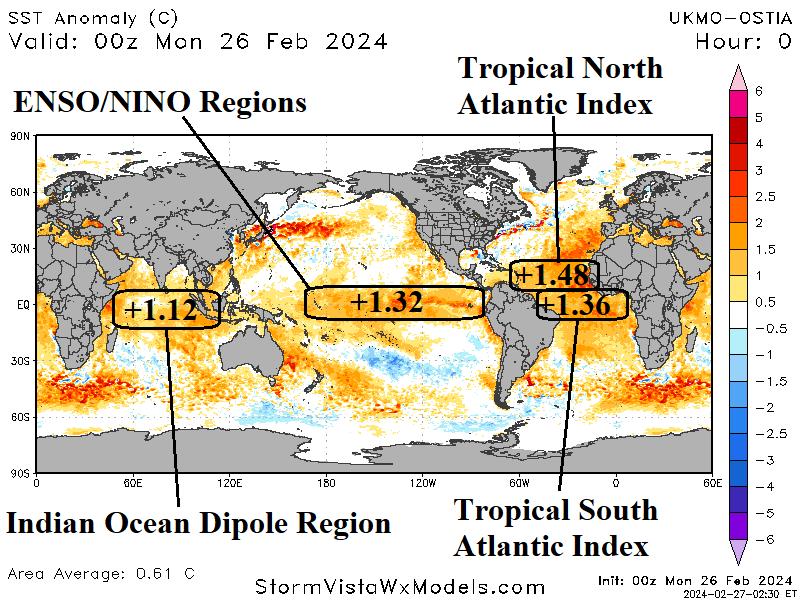
The Super Warm Atlantic (and Global) Tropical SST’s
02/27/2024, 7:18 pm ESTHighlight: East-central U.S. soils trending drier, Brazil drier, Australia rains, and Ivory Coast wet weather.
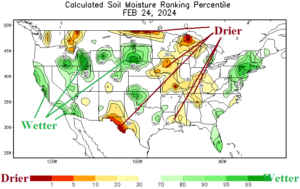

Fig. 1-2: U.S. ranking percentile of soil moisture anomalies and U.S. 15-day percent of normal precipitation outlook.
Discussion: The daily soil moisture anomalies across the U.S. reveal two trend lines during February. The Midwest States are turning drier (Fig. 1). Additionally, the Texas Panhandle drought is worsening, and the Mid-south States are encountering drier soil conditions. Wet soils are increasing from California top the western Great Plains due to the stormy February. The 15-day outlook favors additional dryness in the Midwest States to Texas (Fig. 2).
In Europe, a wet pattern continues for the British Isles, France, and Northern Italy while areas to the north and northeast are much drier (Fig. 3). In Africa, welcome rainfall is in the 15-day outlook for parts of the parched Ivory Coast (Fig. 4). The South Africa drought continues to develop due to a dry 15-day forecast. The Northwest Africa drought is worsening.
The 15-day rainfall outlook across Brazil is drier than normal except for the East Coast (Fig. 5). Meanwhile, wet weather shifts to Northern Argentina through the first third of March. In Australia, tropical rainfall causes a wetter forecast revision through the next 15 days across northern and central portions of the continent (Fig. 6).

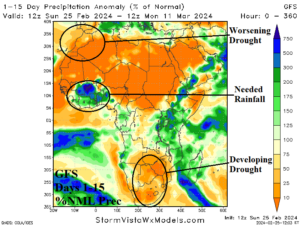
Fig. 3-4: The GFS 15-day precipitation anomaly forecast across Europe and Africa.
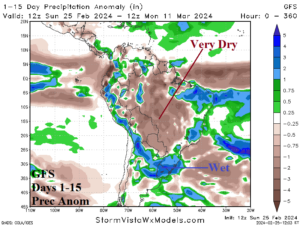
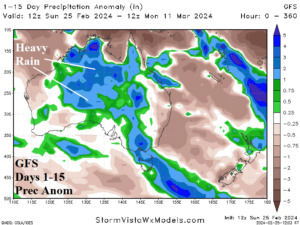
Fig. 5-6: The GFS 15-day precipitation anomaly forecast across South America and Australia.

